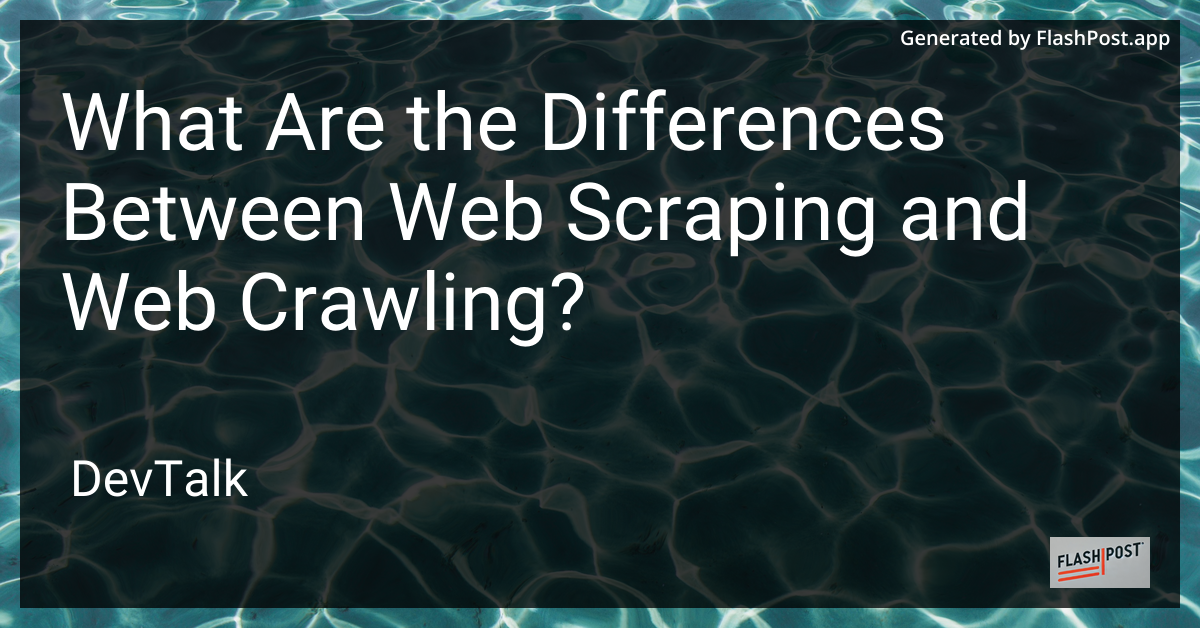What Are the Differences Between Web Scraping and Web Crawling?

Web Scraping vs.
Web Crawling: Understanding the Differences
Web scraping and web crawling are two terms often used interchangeably, but they refer to distinct actions in the realm of data extraction. Both play critical roles in gathering information from the internet, yet they serve different purposes and operate in fundamentally different ways. This article will help you understand the key differences between web scraping and web crawling, and their applications.
What is Web Crawling?
Web crawling is the process of systematically browsing the web to index and discover web pages. It involves automated scripts or bots, known as crawlers or spiders, that navigate through web pages by following links. The primary purpose of web crawling is to index content for search engines, so that users can find web pages through search queries.
Key Features of Web Crawling:
- Discovery: Web crawlers identify and access new or updated web pages.
- Indexing: Crawlers store snapshots of web pages, which are then indexed for search engine results.
- Navigation: They follow hyperlinks from one page to another.
What is Web Scraping?
Web scraping, on the other hand, involves extracting specific data from web pages. The main goal of scraping is to gather particular information, which could be anything from product prices on e-commerce sites to contact details from directories. Web scraping tools and scripts pull targeted data from selected pages for analysis or other uses.
Key Features of Web Scraping:
- Targeted Data Extraction: Scrapers collect specific data based on user-defined rules.
- Automation: It automates the process of gathering large volumes of data from multiple websites.
- Customization: Users can specify the data elements they need from each page.
Key Differences
Despite their similarities, web scraping and web crawling have distinct differences:
-
Purpose:
- Web crawling aims to discover and index web pages for search engines.
- Web scraping focuses on extracting specific datasets for various applications.
-
Process:
- Crawling involves systematic browsing of the internet, often spanning numerous pages.
- Scraping targets specific data points on select pages.
-
Output:
- Crawlers generate an index for search engines.
- Scrapers produce datasets or reports for analytical or business needs.
Applications of Web Crawling and Web Scraping
-
Search Engines: Web crawling is vital for search engines like Google to index the web and provide accurate search results.
-
Market Research: Companies use web scraping to gather competitor pricing, customer reviews, and market trends.
-
Data Analysis: Researchers scrape data from various websites to conduct scientific and social studies.
For a deeper understanding of how proxies support these processes or overcome online restrictions, consider reading about TikTok proxy security concerns, Craigslist proxy IP bans in 2025, and the benefits of proxy services for geo-blocking.
Conclusion
In summary, while both web scraping and web crawling are crucial for navigating and leveraging online data, they cater to different needs and operate differently. Understanding these differences can help businesses and individuals make informed decisions regarding data extraction and web indexing.
By understanding these tools, you can better harness the power of the internet for data-driven decisions and strategic insights.
This article is optimized for SEO by using relevant keywords such as "web scraping," "web crawling," "data extraction," and related terms. Additionally, it includes internal links to provide further context and support SEO efforts.